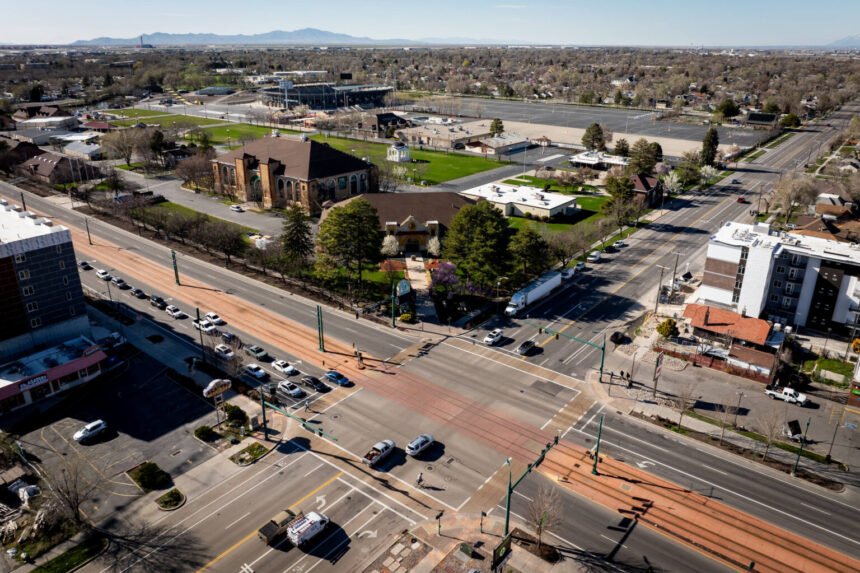This year Salt Lake City managed to put together a major downtown redevelopment plan for its new professional hockey team with added benefits for the community. You’d think it would be easy to do the same for a new pro baseball team.
But it isn’t, starting with the fact that there is no baseball team assigned to Salt Lake City — and that MLB expansion decision may happen for about five years. Also, that the city doesn’t have a direct say in tax and other major planning decisions for the new district in the Fairpark neighborhood.
Salt Lake City can, however, help shape a few aspects of the development, including zoning agreements setting aside affordable housing and some commercial priorities, if the City Council reaches an agreement with the Larry H. Miller Company — which is bidding for an MLB team for Utah — by the end of 2024.
When the state passed House Bill 562 last legislative session, it limited the city’s decisions in the Utah Fairpark Area Investment and Restoration District, which encompasses the Power District and the Utah State Fairpark. City officials likened it to how the Inland Port Authority, a trade hub governed by a state-appointed board, works. Years have passed since the Inland Port Authority was first approved, but the city is still fatigued by that state-governed structure, said Victoria Petro, chair of the Salt Lake City Council. But, there’s enthusiasm for the potential ballpark development.
“I think LHM has done a good job of proving that they are partners who care,” Petro said in early November. “And so I anticipate that the council will react to the zoning request in accordance with our statutory responsibility and with the same eye towards protecting our constituents that you saw us have with the NHL negotiation.”
After hectic months revising a deal for the state’s new NHL team, the city is now reviewing plans to potentially bring in a baseball franchise. Here’s what has happened so far.
Initial plan includes river promenade along a cleaner Jordan River
The Larry H. Miller Company signed a contract with Rocky Mountain Power to acquire the land previously owned by the utility within the 93-acre district boundaries, except for the piece that’s set to become Rocky Mountain Power’s headquarters. Along with land owned by the state, the hope is to have a river promenade along a cleaner Jordan River, with housing, restaurants, shops, and, potentially, a stadium.
The Larry H. Miller Company is partnering with Populous, the architectural firm behind The Sphere in Las Vegas, to design an about 13-acre baseball stadium, Brad Holmes, president of Larry H. Miller Real Estate told the state-appointed Utah Fairpark Area Investment and Restoration District Board (UFAIR) in October.
GET THE MORNING HEADLINES.
There are also big plans for the Jordan River promenade, Holmes said. The intention is to create a more pedestrian-friendly zone with uses on both sides of North Temple and the river, tying together the Power District and the Utah State Fairpark.
“We’ve taken to another step with our landscape architects and land planners to really understand what that river experience is starting to look like, how you cross the river, and obviously, with a tremendous focus on public safety,” he said.
Efforts to improve safety along the Jordan River Trail have already started, with Salt Lake police making 102 drug-related arrests in 30 days, part of a crackdown on fentanyl in the state. There have been environmental remediation efforts for the Power District, and also plans to demolish a trucking terminal in the area.
While seeing the plans, Dan Strong, president of the Westside Coalition and member of the UFAIR board, described the vision as exciting, since jogging or biking in some areas along North Temple currently feels unsafe.
“That’s an asset our community can’t use right now, and this looks like something we would love to use,” he said.
What about taxes?
This deal will be different from the one the city approved for a Downtown Revitalization District supporting the Utah Hockey Club playing in the Delta Center because, when it comes to a baseball team, the state turned over the taxation decision making to the UFAIR board.
With the state’s intention to raise about $900 million to help build the stadium through different taxes generated only within the district, the UFAIR board has the power to make major decisions for this piece of land on the west side of Salt Lake City. And it already started that process.
During its October meeting, the UFAIR board approved a telecommunications and an energy and use tax for the district. While the rates will remain the same, starting April 2025 the tax revenue will go to the district and not the city.
YOU MAKE OUR WORK POSSIBLE.
Public benefits
In late October, the Salt Lake City Planning Commission recommended approval of the initial zoning plans for what is expected to be the new Jordan River Fairpark Zone with buildings that could be up to 400 feet tall, but with design reviews for those above 200 feet.
However, commissioners remained skeptical of the rushed nature of the project and had a list of conditions, including some building setbacks, minimum percentages for publicly accessible open space, dedicated affordable housing, and design standards for all buildings facing public streets and the Jordan River. That agreement is now going to the City Council for its review.
HB 562 doesn’t trace a path to draft a participation agreement, which would outline expectations for the development, or benefits for the community, nor does it give the city the power to levy taxes. However, according to Petro, also a board member of UFAIR, the Larry H. Miller Company has voluntarily entered into negotiations with the city.
During a Tuesday work meeting, the Salt Lake City Council acknowledged that fact and commended it.
“The bill doesn’t necessarily protect our city or interests, but Larry H. Miller is staying at the table to find some common public benefit and to show that their words match with their actions. So to me, it is encouraging to see that,” said Salt Lake City Council member Alejandro Puy, who represents the Fairpark neighborhood.
The west side is home to many of the state’s communities of color. It has also been historically underserved by the government. So, any promises to transform the neighborhoods with big projects can be unsettling for some. Amanda Covington, chief corporate affairs officer for the Larry H. Miller Company, told the council the company is not after that so-called transformation.
“As we’ve met with council members as well as community leaders, what we understand is this is a beautiful, vibrant and culturally rich community that has an incredible legacy that we want to continue to build upon, not transform,” Covigton said.
The council may not have the authority to draft a participation agreement with public benefits, but it still would like to have a binding document with Larry H. Miller, potentially committing to using local contractors in the district, as well as workforce development programs and free expression protections and anti-discrimination policies in the space.
Covington doesn’t believe that those requests are “necessarily development agreement items,” she said. However, the contract could “nod that we will then work on a participation, or community benefits agreement.”
Nick Tarbet, senior public analyst for the city, said that’s possible if the language is very clear about next steps, how the council will engage with LHM and the type of benefits that could be considered.
“LHM is a good partner who wants the community to genuinely, authentically be enriched by this. So they have voluntarily come to the table. And they’re talking about things like job readiness. They’re talking about special places that are opportunities for business incubation, including food and beverage,” she told Utah News Dispatch. “They’re talking about fixed income, so income-restricting certain units.”
But, during the UFAIR board meeting in October, she also expressed concern about potentially rushing into committing to plans in order to meet the Dec. 31 state-imposed deadline.
“I know sometimes the city can be accused of being a little obstructionist, or difficult to deal with, and I want to nip that narrative in the bud and just point out the complexity of the job that’s been assigned, both to the board and to the city, in coming to these conclusions together by that deadline,” she said.
Utah News Dispatch, like the Idaho Capital Sun, is part of States Newsroom, a nonprofit news network supported by grants and a coalition of donors as a 501c(3) public charity. Utah News Dispatch maintains editorial independence. Contact Editor McKenzie Romero for questions: [email protected]. Follow Utah News Dispatch on Facebook and X.











